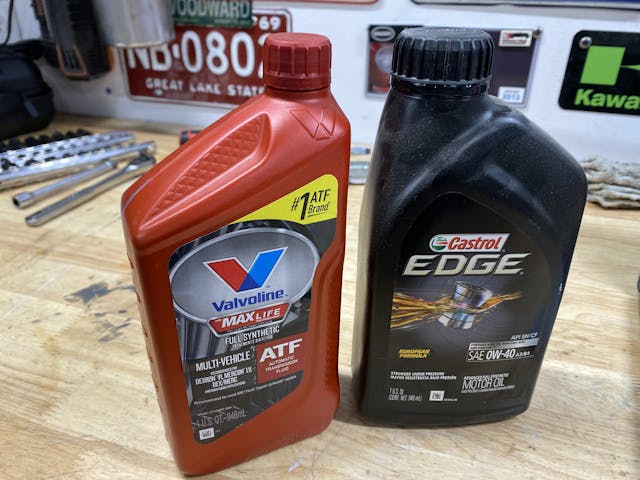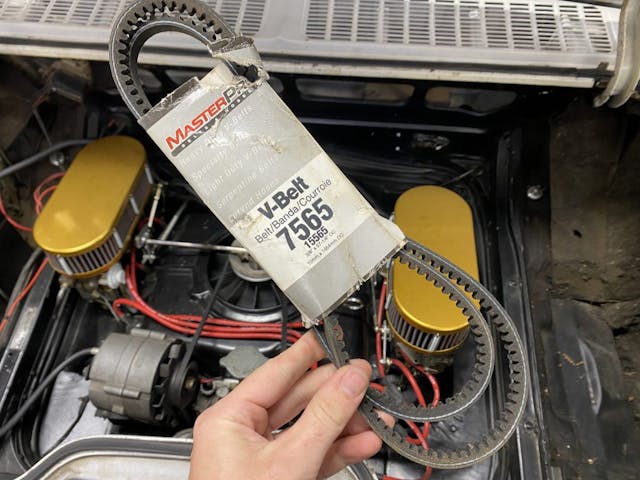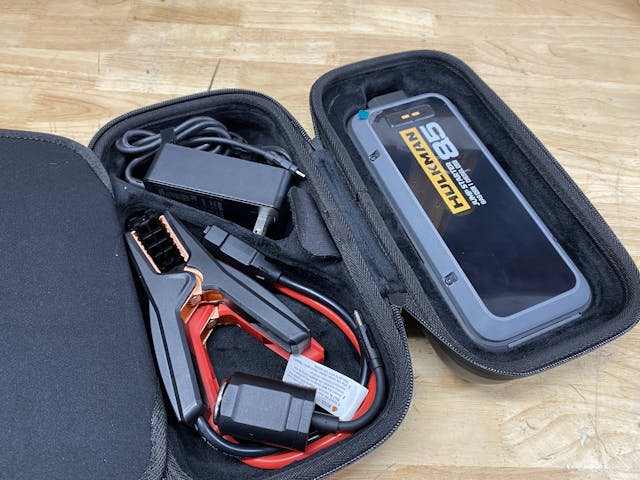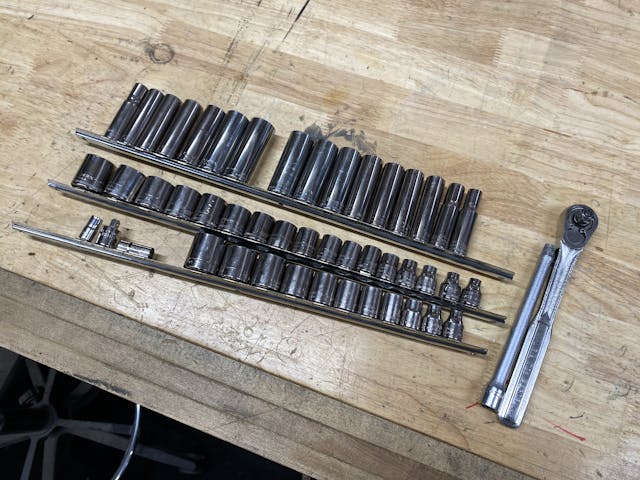Media | Articles
6 essentials for your travel toolkit
Don’t let the fall colors scare you into pickling your car for winter just yet. In many parts of the country, this is the best time to be out on the road. Color tours are spooling up all over the northeast, and as the temps drop in the southwest, vintage cars are returning to the roads—but that means more than a few will likely end up on the roadside too. Set yourself up for success and pack a toolkit to at least handle the basics.
Of course, for bigger trips or questionable cars, it makes sense to pack a big kit that could cover just about everything, but that is not right for every person or situation. As the old saying goes, the best time to build a toolkit for your vintage ride was yesterday and the second best time is right now. Even if you aren’t handy or do your own maintenance it is never known who might stop and offer help and without tools that good Samaritan is reduced to good thoughts. Here are six basic essentials for your travel toolkit.
Screwdrivers
Much of any car is assembled with slotted and Phillips-head screws, and even a precursory inspection often requires removing an access panel or cover. Sometimes a noise or vibration does not indicate immediate death for your car or engine, and after inspection you can determine if it is safe to carry on your way despite some part or piece misbehaving. A screwdriver can also act as a stethoscope in a pinch too, allowing you to track down a goofy noise for better diagnostics with less disassembly.
Pliers
Whether you need to deal with a stubborn spring hose clamp or moving a piece that got a little hot, pliers are the tool for the job. At bare minimum you should carry needle nose and slip joint pliers, as these will cover the vast majority of tasks on the roadside. Bonus points if your needle nose pliers have a cutting edge, as this will work for wiring repairs or stripping.
Fluids
We can’t live without water, and your engine can’t live without oil and coolant. They’re the fluids you’re most likely to lose and can still safely refill and continue your drive. Some folks will tell you to carry brake fluid, but if you’re losing brake fluid, that’s not something to top off and continue. Your brakes are a critical safety system that should be repaired properly by a pro, and your Hagerty roadside assistance card is going to be the best tool to use if the brake reservoir runs out while on the road.
Marketplace
Buy and sell classics with confidence
Belts
Most vintage engines run simple V-belt setups, but that system has been usurped by the serpentine belt. Relying on a chain parts store to have a variety of V-belts can be a big ask since they likely don’t sell many and thus only stock the most popular sizes. Belts are light and pack down small, so having the proper belts for your car is a no brainer.
Jump pack
Batteries go flat. It just happens sometimes, especially on vintage electrical systems in which small draws can go unnoticed until its too late. A jump pack can provide the juice to get your engine running again or keep it running in a real pinch. Also, most jump packs these days are small and light, while also packing more punch than ever. A bonus is it allows you to charge your phone or other critical accessories if you find yourself stranded and waiting for a tow.
Sockets and wrenches
Yeah, duh. It’s hard to take anything apart or service pieces without the ability to remove nuts and bolts. If you are handy and want to carry the bare minimum, start by looking under the hood and picking just the wrenches and sockets for jobs you are willing to do on the roadside. If in doubt, grab a full set of shallow and deep sockets for both SAE and metric, because you never know what hack might be hiding under the hood where someone previously mixed hardware. This also gives you the chance to be the hero in someone else’s story when you have the socket they need in order to leave the car show.
Bonus: Tool roll
Personally, I hate random things rolling around my car, doubly so if they make noise. A simple tool roll is cheap and allows you to keep all your trip-saving bits and pieces together. Tuck it all under a seat or in back with the spare tire, and rest easy each time you take the car out knowing that you’ve got at least the bare minimum needed to keep your trip on the road rather than the shoulder.
Is there something you’d add to a super basic toolkit? Leave your suggestion in the comments below.
Check out the Hagerty Media homepage so you don’t miss a single story, or better yet, bookmark it.




















I won’t leave home without a pair of vice-loks
No matter what you bring it seems like you never have the right part or the right tool.
All good ideas but you will turn into Macgyver when you break down on the side of the road. My last saviour (when the car was bucking like a bronco for no reason) was a single small 1/2″ wrench to tighten the loose distributor bolt (no other goofy wrench or socket will fit).
In addition to the “6” I always have a crank flashlight, flat fix, JB weld, a Clamptite w/wire, disposable gloves, rags/paper towels, and duct tape.
Alligator clip jumper wire.
A 12V test light and some spare fuses plus an ABC fire extinguisher and some flares. A jack that works and a gallon of water or at least a jug in case you happen to be by a lake or ditch. My favorite light is mounted to a headband which allows me to use both hands.
Add must-haves: 1) 4 pr. disposable latex / nitrile gloves 2) wad of clean shop rags that can be tossed when greasy / oily / gasoliney
You’re welcome.
My father told me to never drive without a couple of coat hangers in the car. The old black heavy duty kind. Came in handy when one of the ears on my 62 Corvair Monza Convertible’s generator broke in Saint Louis. I wired it up and arrived at Camp Pendleton in time. Much better than bailing wire.
– First & foremost, an honest appraisal of the vehicle in question. With a hobby/collector vehicle, your appraisal will ‘drive’ the list of tools, parts and supplies that you carry;
– Gather the tools, parts & supplies you think you’ll need, along with an appropriate box/container to carry them in (no, not a cardboard box – something substantial, permanent, which has adequate room for ‘additions’;
– Secure that ‘container’ somewhere in the vehicle (hopefully out of sight), so it doesn’t disappear or ‘walk off’;
– Always have a backup/contingency ‘plan’, in case there is a breakdown or other event, beyond your expertise to ‘fix’ (temporarily or permanently) while stuck on the side of the road, etc.. IMHO, towing insurance is a ‘must’;
Pretty good list. I would add a vice grips. I do have to disagree with bringing a belt. This is something, along with coolant hoses are time dated items and should be replaced before you hit the road
WD40 to dry out ignition in wet weather is a must on older cars
If your car is OBD1, a jumper wire to read codes. If OBDII a code reader.
Another Good Article, Kyle! I bet that your list of articles-to-be-written is like mine–my head is full of them!
I deviate from you (here) only in this factor–since I belong to a club of a particular make of vehicles, I tailor my on-the-road tool kit to not only my vehicle, but to the rest of the vehicles in the cruise. Not everyone on one of our cruises thinks exactly like I do or has had as much experience. So, I try to think ahead for all of us. Keep up the great writing job, Kyle!
Where’s the roll of duct tape?
Duct tape, safety wire, and zip ties.